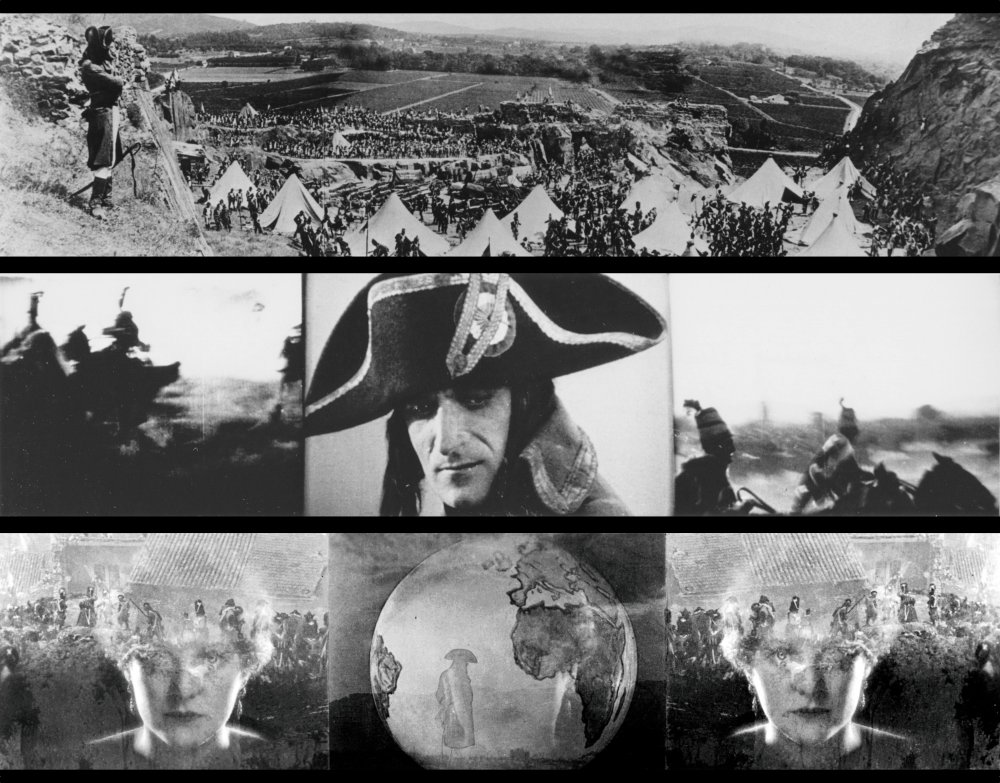The Silent Screen #5
Napoleon (1927) BSO by Arthur Honegger
The Assassination of the Duke of Guise (1908) BSO by Camille Saint-Saëns
Original title: L'assassinat du duc de Guise. Year: 1908. Duration: 15 minutes (300 meters). Country: France. Director: Charles Le Bargy (direction of actors) and André Calmettes (staging) . Script: Henri Lavedan. Production: Art film. Decorated: Émile Bertin. Music: Camille Saint-Saëns. Interpétes: Charles Le Bargy (Henry III), Albert Lambert (the Duke of Guisa), Gabrielle Robinne (the Marquesa), Berthe Bovy. Genre: drama / historical / XVI century / silent movies / origins of cinema / short film.
In 1908, French screens were invaded by coarse farces and sweetened melodramas... which delighted the popular public. The elite is ashamed of this "idiots' amusement".. Eager to "raising the level of the cinematographer".and to increase their audience, some industrious publishers, the brothers Lafittecreate the Société du Film d'art. They appeal to theater artists and the "big issues". Other firms will imitate them, notably the Société cinématographique des auteurs et gens de lettres (SCAGI) of Pierre Decourcelle.
Film-manifesto, The assassin of the Duke of Guisa included in its credits the names of an academic (Henri Lavedan), of actors from the Français and a renowned composer (Camille Saint-Saëns), in charge of composing an original score, something that had not been seen until then. On the technical level, the film is not lacking in qualities. Its influence was especially noticeable abroad: Griffith and Dreyeramong others, found there the beginnings of a new dramaturgy.
The Art Film continued its activities until 1920, under the impetus of Louis Nalpas. Sarah Bernhardt will shoot there Lady of the Camellias (1912), and also debuted there. Abel Gance. Louis Delluc has paid tribute to its promoters in the following terms: "To have understood before anyone else in France that cinema was or would be an art constitutes an egregious title of glory.". "The assassination of the Duke of Guise marks the end of cinema's fair period; it concretizes the divorce between the pioneers and the masters of the industry". (Henri Langlois).
In 1980, the Film Archive Service restored the original tinted version of the film, adding the music by Saint-Saëns. Presented at the Palais des Arts in Paris, in the presence of Gabrielle Robinnethe film was once again a success.
Napoleon (1927) BSO by Arthur Honegger
Few artistic works have escaped the control of their creator as much as the "Napoleon" from Abel Gance. From the moment he conceived the idea of filming a life of the emperor, Gance He would not cease to debate it internally, introducing constant changes, never giving it up, and even destroying some of its sequences in a moment of desperation.
The vicissitudes suffered by "Napoleon vu par Abel Glance". would be endless. The first version, which premiered on April 7, 1927 at the Paris Opera Househad 28 reels. It was only shown in its entirety in eight European cities, and no complete copy currently exists. For its exploitation in commercial circuits, Gance had to reduce it by a little more than half. MGM bought the film for distribution in America and left it on only eight reels. In Europe, its footage also suffered different damages. Then, in 1934, a first version with dialogues and stereophonic sound was considered, with a length of 130 minutes, for which he shot a prologue and new spoken scenes. Twenty-one years later, the film was retaken, changing its title to "Napoleon Bonaparte"and including the final sequences with triple screen. In 1971, with the financial support of Claude Lelouchrebounded "Napoleon vu par Abel Gance". with a running time of 275 minutes, including a color introduction.
The silent copy preserved by the Cinematheque FrançaiseThe film, with 17 reels, contained several scenes with repeated shots. Francis Ford Coppola distributed in the eighties a version of almost 230 minutes, with music by Carmine Coppola. The most complete reconstruction is due to the British historian Kevin Brownlowon behalf of the National Film Archive of London with 250 minutes of duration.
It is a fascinating film from beginning to end. The richness of its images, its capacity for poetic suggestion, the changing rhythm with which it envelops and drags the spectator without his interest waning for a single moment, make it a singular work. But it also contains significant technical advances. From its subjective photography, to the polyvision or triple projection on a panoramic screen.

